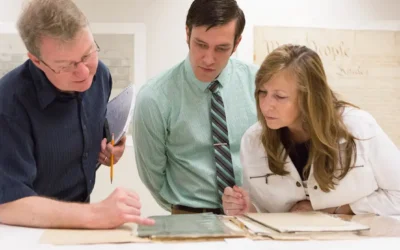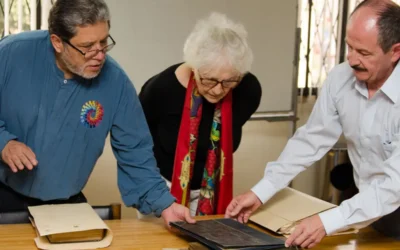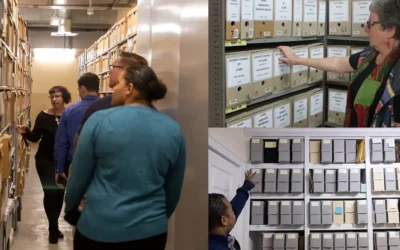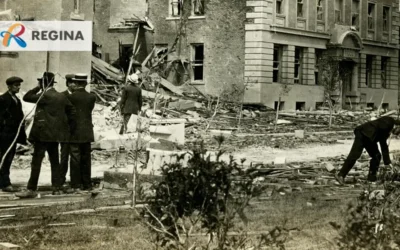Tracking Progress of Archival Projects
Margot Note
Tracking is the process by which archival project progress is measured to ensure that changes to the schedule are tackled promptly. The starting point for tracking progress in archival projects is the project baseline schedule and other plan documents devised and accepted when key stages are fixed before implementation. The project baseline should remain unchanged throughout the project, and it’s the guide against which variances are identified.
Team members need to know where their efforts fit into the larger project, how they’re doing compared to other team members, and how the team fares compared to initial project estimates. Ensure that processes are in place to allow team members to perform tasks and update their own progress on individual tasks. Project managers should view overall project status, adjust the plan as needed, document actions and decisions, and calculate metrics that may improve the accuracy of estimates for future projects.
Micromanaging is the Devil’s Work
While project managers must track progress in archival projects, they should resist micromanaging their team. It lowers morale, fosters dependence, or discourages growth. Regardless of the intent, micromanaging tells team members that there’s a lack of faith in their ability to do their work. The only times project managers may need to closely manage are when the archival project is behind schedule or when a team member isn’t doing his or her job.
The worst part of micromanaging is the emotional toll. It’s exhausting for the person doing it, and it causes team members to resent the micromanager. Have faith that team members will be able to deal with the details of their work—and focus on tracking the overall progress of the archival project.
Communication is Key
Communicate with the team regularly. Don’t wait to do this in project status meetings. Talk to individuals before meetings so you’re prepared to deliver the right message. If project managers check in randomly yet continually, the team is conditioned to move forward without prodding.
Search for progress updates from the team. If a task is supposed to begin, ask the team member to confirm it did. If a task is finishing within a week, check its progress. Many project managers make the mistake of waiting until the project status meeting to check how things are progressing. What some find is that nothing has occurred since the previous status meeting—and now an entire week has been lost.
Set the Pace
Assume that the plan is set appropriately. The schedule will expand and contract based on early and late dates, and the project plan should be flexible enough to accommodate these variables. If tasks are finished early, continue the momentum by notifying team members to start the next task early. If it’s finishing late, talk with team members to make sure they are ready to do the next piece of work as soon as it ends, so that minimal time is lost.
Track Status, Time, Budget Consistently
Keep track of the information that will be most useful later. Track the cost of the project and the amount of effort spent, usually noted as hours devoted to each task or expenses accrued. Tracking process involves measurement of things that happened during the project, such as the number of review cycles. These metrics can include variance measurements, such as how far over or under budget the project is, or how far ahead of (or behind) the estimated schedule. The output is the capacity of the finished project, such as the number of digitized images in a mass digitization project.
Be diligent in keeping current with the status of the plan. Record actual hours spent and other measures appropriate to the project. Knowing what was projected regarding time, money, and scope versus actual metrics allows project managers to hone their estimation skills. Tracking progress in archival projects helps archivists develop into even better archival project managers.
Margot Note
Margot Note, archivist and records manager, writes for Lucidea, provider of ArchivEra, archive collections management for today’s challenges and tomorrow’s. See more of Margot’s advice on running successful archival projects.
Similar Posts
Enhancing Collaboration; Methods for Archivists
Archivists can enhance collaboration through user-centric approaches and efficient processing methods based on customer service principles.
Navigating Selection in Archival Practice
The archival selection process is far from straightforward, given the limitations of long-term preservation and ongoing accessibility challenges.
Responsible Stewardship in Archival Practice
Responsible stewardship is a philosophy that guides the actions and decisions of archivists in safeguarding collective memory.
A Modern View of a City’s History via ArchivEra
Brief success story on City of Regina Archives’ use of ArchivEra to manage collections of legal, historical, administrative or financial significance
Hosting service
Enjoy all of the benefits of your Lucidea solution with secure, reliable, stress free hosting
Programs & incentives
No matter your size or budget, we’ve got you covered, today and tomorrow




Leave a Comment
Comments are reviewed and must adhere to our comments policy.
0 Comments